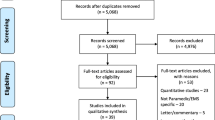Abstract
Background and objective Despite large activity worldwide in building and implementing new return-to-work (RTW) services, few studies have focused on how such implementation processes develop. The aim of this study was to examine the development in patient and service characteristics the first six years of implementing a RTW service for persons with acquired brain injury (ABI). Methods The study was designed as a cohort study (n=189). Data were collected by questionnaires, filled out by the service providers. The material was divided into, and analyzed with, two implementation phases. Non-parametrical statistical methods and hierarchical regression analyses were applied on the material. Results The number of patients increased significantly, and the patient group became more homogeneous. Both the duration of the service, and the number of consultations and group session days were significantly reduced. Conclusion The patient group became more homogenous, but also significantly larger during the first six years of building the RTW service. At the same time, the duration of the service decreased. This study therefore questions if there is a lack of consensus on the intensity of work rehabilitation for this group.

Similar content being viewed by others
References
Loisel P, et al. Prevention of work disability due to musculoskeletal disorders: the challenge of implementing evidence. J Occup Rehabil. 2005;15(4):507–24.
Pransky G, Loisel P, Anema J. Work disability prevention research: current and future prospects. J Occup Rehabil. 2011;21(3):287–92.
Haveraaen LA, et al. Do psychological job demands, decision control and social support predictreturn to work three months after a return-to-work (RTW) programme? The rapid-RTW cohort study. Work. 2015;53(1):61–71.
Aas RW, Raanaas RK, Shaw L. Unifying and diversifying workplace-based efforts for promoting health and preventing disability. Work. 2015;53(1):3–7.
Velzen JMv, et al. Factors influencing return to work experienced by people with acquired brain injury: a qualitative research study. Disabil Rehabil. 2011;33(23–24):2237–46.
Binder LM. Persisting symptoms after mild head injury: a review of the postconcussive syndrome. J Clin Exp Neuropsychol. 1986;8(4):323–46.
Langlois JA, Rutland-Brown W, Wald MM. The epidemiology and impact of traumatic brain injury. J Head Trauma Rehabil. 2006;21(5):375–8.
Leung K, Man D. Prediction of vocational outcome of people with brain injury after rehabilitation: a discriminant analysis. Work. 2005;25(4):333–40.
Murphy L, et al. Effectiveness of vocational rehabilitation following acquired brain injury: preliminary evaluation of a UK specialist rehabilitation programme. Brain Inj. 2006;20(11):1119–29.
Jacobsen A. Persons with brain injury and the significance of work for identity and integration. Fynst Amt, Fyn: The Brain Injury Center; 2005.
Johansson U, Tham K. The meaning of work after acquired brain injury. Am J Occup Ther. 2006;60(1):60–9.
Van Velzen JM, et al. Prognostic factors of return to work after acquired brain injury: a systematic review. Brain Inj. 2009;23(3):385–95.
Van Velzen JM, et al. How many people return to work after acquired brain injury?: a systematic review. Brain Inj. 2009;23(6):473–88.
Johnstone B, et al. Predictors of success for state vocational rehabilitation clients with traumatic brain injury. Arch Phys Med Rehabil. 2003;84(2):161–7.
Fadyl JK, McPherson KM. Approaches to vocational rehabilitation after traumatic brain injury: a review of the evidence. J Head Trauma Rehabil. 2009;24(3):195–212.
Stergiou-Kita M, Dawson D, Rappolt S. Inter-professional clinical practice guideline for vocational evaluation following traumatic brain injury: a systematic and evidence-based approach. J Occup Rehabil. 2012;22(2):166–81.
SPSS version 21. Armonk, NY: IBM Corporation; 2012
Asplund K, et al. Relative risk for stroke by age, sex, and population based on follow-up of 18 European populations in the MORGAM project. Stroke J Am Heart Assoc. 2009;40(7):2319–26.
Falcone G, Chong JY. Gender differences in stroke among older adults. Geriatr Aging. 2007;10(08):497–500.
Appelros P, Stegmayr B, Terént A. Sex differences in stroke epidemiology: a systematic review. Stroke. 2009;40(4):1082–90.
Burns J, Hauser WA. The epidemiology of traumatic brain injury: a review. Epilepsia. 2003;44(10):2–10.
Langlois JA, Rutland-Brown W, Thomsd KE. Traumatic brain injury in the United States: emergency department visits, hospitalization, and deaths. Atlanta: Centers for Disease Control and Prevention, National Center for Injury Prevention and Control; 2004
Tooth L, et al. Length of stay, discharge destination, and functional improvement utility of the Australian National Subacute and Nonacute Patient Casemix Classification. Stroke. 2005;36(7):1519–25.
WHO. International classification of functioning, disability and health (ICF). Geneva: World Health Organization; 2001
Mitchell K. Just stuck! Managing ambivalence and resistance to going back to work, part 1. Prof Case Manag. 2012;17(2):94–6.
Fukuoka Y, et al. Effect of job strain and depressive symptoms upon returning to work after acute coronary syndrome. Soc Sci Med. 2009;68(10):1875–81.
Gimeno D, et al. The role of job strain on return to work after carpal tunnel surgery. Occup Environ Med. 2005;62(11):778–85.
Krause N, et al. Psychosocial job factors and return-to-work after compensated low back injury: a disability phase-specific analysis. Am J Ind Med. 2001;40(4):374–92.
Johansson G. The illness flexibility model and sickness absence. Solna: Karolinska Institutet; 2007
Johansson G, Lundberg O, Lundberg I. Return to work and adjustment latitude among employees on long-term sickness absence. J Occup Rehabil. 2006;16(2):185–95.
Lysaght RM, Larmour-Trode S. An exploration of social support as a factor in the return-to-work process. Work. 2008;30(3):255–66.
Acknowledgements
We would like to thank the patients and the ABI RTW team at Sykehuset Innlandet, Hamar, Norway. Our special thanks go to the managers for the ABI RTW service; Eija Sareneva, Iver Fallet, and Inga Rønningen.
Author information
Authors and Affiliations
Corresponding author
Ethics declarations
Conflict of interest
The authors L Haveraaen, EPM Brouwers, U Sveen, LS Skarpaas, H Sagvaag, and RW Aas declare that they have no conflict of interest.
Informed Consent
All procedures followed were in accordance with the ethical standards of the responsible committee on human experimentation (institutional and national) and with the Helsinki Declaration of 1975, as revised in 2000 (5). Informed consent was obtained from all patients for being included in the study.
Rights and permissions
About this article
Cite this article
Haveraaen, L., Brouwers, E.P.M., Sveen, U. et al. The First Six Years of Building and Implementing a Return-to-Work Service for Patients with Acquired Brain Injury. The Rapid-Return-to-Work-Cohort-Study. J Occup Rehabil 27, 623–632 (2017). https://doi.org/10.1007/s10926-016-9693-7
Published:
Issue Date:
DOI: https://doi.org/10.1007/s10926-016-9693-7




